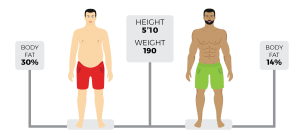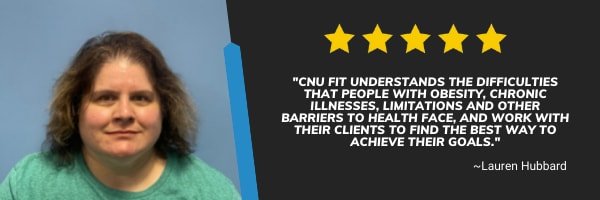
When folks talk about losing weight, most don't mean they just want the number on the scale to go down. What they really want is their body to change the way it looks, even the way it feels: for example, fitting into small sizes of clothing comfortably. Two people can weight the exact same on the scale but have totally different body fat percentages and look completely different.
This change in the way your body looks is called body recomposition. Recomposition means you're lowering your body fat percentage, and in some cases increase muscle mass to give your body a whole different look and feel!
So how do you lose fat? Below are the 5 essentials to help you lose fat and gain the body you truly desire.
1. Energy Defecit
You've probably heard that weight loss comes from "calories in vs. calories out" and this is definitely true. In order to lose fat you need to be in an energy defecit (meaning a caloric defecit). Where most folks go wrong is that years of unsustainable dieting slows down your metabolism, so by the time you're in your 40s or 50s theorettically a defecit might have you eating as low as 1200 calories (or below) which is too little calories for most people to properly lose fat. That's why we often see people say "well I'm only eating 1200 calories and I'm STILL not losing weight!" In cases like this you may need to reverse diet first, speed up your metabolism so that you can do a defecit at a healthy level. The best way to do this effectively is to get the help of a coach who can guide you!
2. Progressive Resistance Training
There are many different factors that determine how many calories someone burns naturally, one of those things is how much muscle you have on your body. Muscle burns more calories than fat, some experts say between 10-15 calories per pound or muscle per day, so the more muscle you have on your body the faster your metabolism is naturally. While the act of resistance training doesn't burn as many calories in the moment as cardio, it prevents the loss of lean mass that happens from aging and chronic dieting, which in turn increases your metabolism.
3. Proper Size of Defecit for Healthy Loss
Where most "diets" go wrong is the size of the defecit they put people at. A healthy rate of weight loss is about .5-1% of totaly body weight per week, which doesn't need a drastic defecit to achieve. 200-300 calories below maintence can acheive this, and allows folks to create more sustainable habits that will allow them to keep the weight off long term.
If you're unsure of where your maintence calories are and what a healthy defecit would be, that when you'd want to contact a coach.
4. Sufficient Proteinn
Most people don't eat enough protein. Protein intake is essential for maintaining muscle mass as you age. If you don't eat suffecient protein and strength train consistently, every year after the age of 30 on average you lose 1 lb of muscle and replace it with 1 lb of fat. This is problematic not only for your metabolism, but also for your functionality. Most people don't go to assited living because they're sick, they go because they are not strong enough to live and do their day to day tasks on their own. A good starting place is to consume 100 g minimum of protein per day. If you're looking for optimal protein intake for fat loss, it varies based on activity levels, age, and how much lean mass you currently have on your body.
5. Appropriate Cardio
The go-to for many who are looking to lose weight is cardio. It's easy to understand why: in a 30 minute stint doing cardio you can definitely burn more calories than doing resistance training for 30 minutes. However, if you're truly looking for fat loss it's not the calories burned in the moment that matters, it's your metabolism speeding up. Over-doing it on the cardio can cause catabolism (your body breaking down your muscles for a source of energy instead of your fat) which, while you may lose weight, will not cause the recomposition that we talked about at the beginning of this article. Some guidelines for cardio is to do nore more than 30 minutes of low-impact cardio for day, combined with 1-2 days of high interval cardio training. Combine this with strength training 3-5 days a week and you will be amazed with the changes you see in your body.
If you're truly looking to lose fat and change the way your body looks and feels, start with these 5 steps. If you feel overwhelmed and need more quidance, give us a call at 302-689-3489 and we will pair your with one of our professional transformation coaches to support you.


